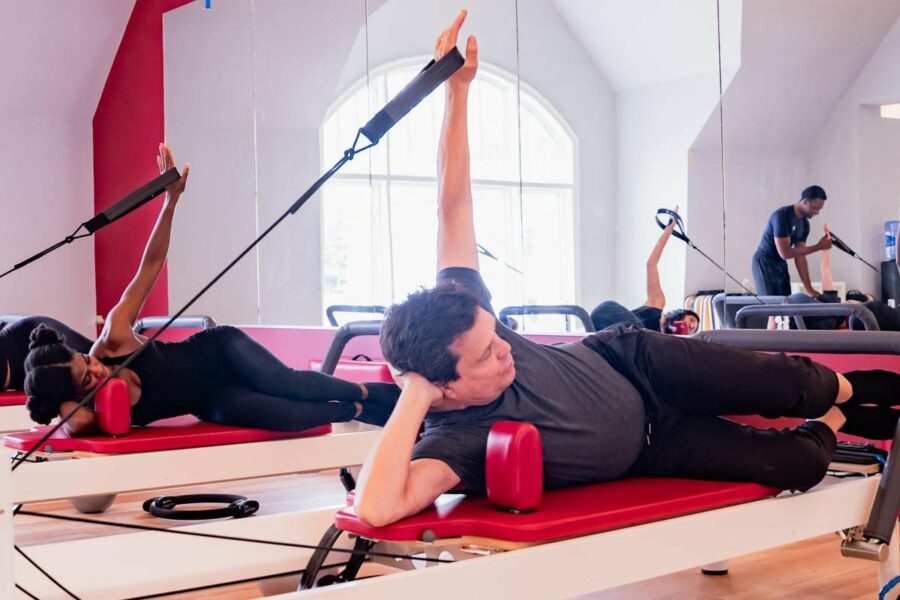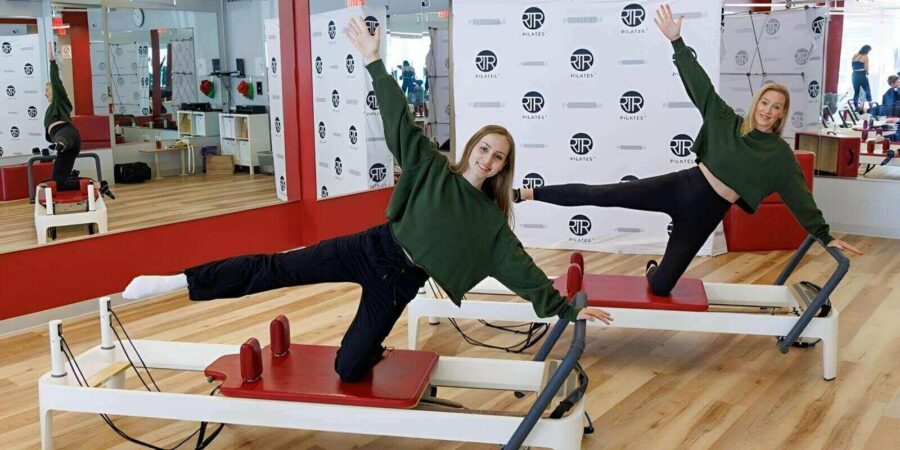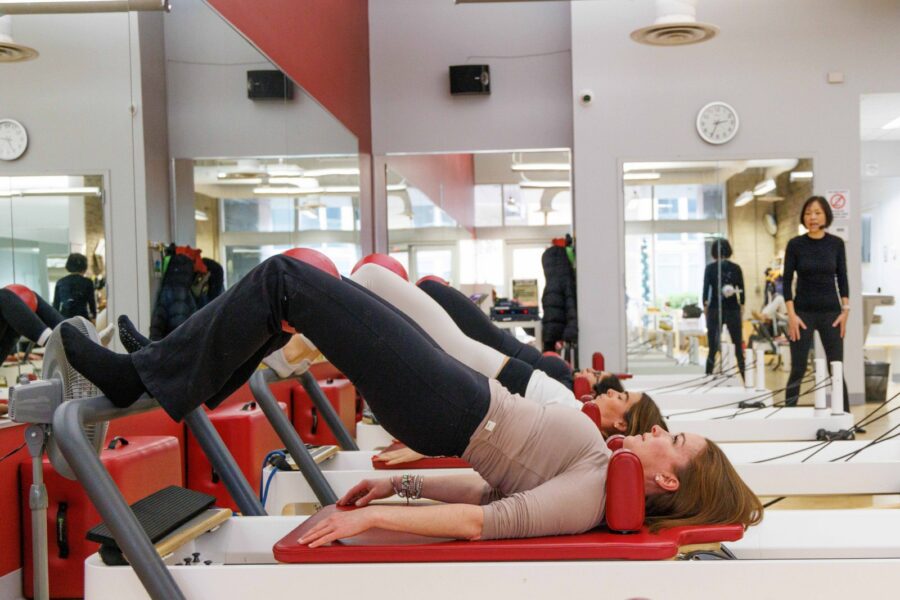 Although using a mat for Pilates may initially feel sufficient, you may find you are unable to expand your experience beyond your current routines. Many Pilates classes use reformers for the increased resistance and the support they provide.
Although using a mat for Pilates may initially feel sufficient, you may find you are unable to expand your experience beyond your current routines. Many Pilates classes use reformers for the increased resistance and the support they provide.
Using the reformer also creates the opportunity to incorporate additional tools to target even more muscles in different ways.
Whether you have no experience or some mat experience, for residents in the DMV interested in a Pilates class, there is no better time than now to try a class and see what the reformer is all about.
Here’s what you need to know about both reformer machines and mats.
What Is Mat Pilates?
It should not come as a surprise that Pilates performed on a floor mat is known as mat Pilates. The mat is usually thick and soft to support targeted areas of pressure, since your body will often be pressing into it as you hold yourself up or stretch.
Mat Pilates is typically appealing to beginners, who may want to work out in their own home; however, this may not be ideal for several reasons.
First and foremost, you will have no support. Because the mat does not come with built-in supports to help your body find the right positions, you will have no built-in guidance about correctly moving your body.
Without the proper guidance of an instructor, you may be using your body in ways that are disadvantageous at best and, at worst, actively harmful.
Second, even if you use tools such as the Magic Circle, the mat does not allow for as many exercises or resistance changes as a reformer.
The Difference in Reformer Pilates
Also no surprise, Pilates performed on a reformer machine is known as Reformer Pilates. The reformer has a sliding platform, slightly elevated from the floor, with attached bars and cables on which the exercises are done.
 The reformer is manually powered by your body movement and the tension is adjustable through the straps and springs based on the type and degree of the movements being performed.
The reformer is manually powered by your body movement and the tension is adjustable through the straps and springs based on the type and degree of the movements being performed.
Because the reformer moves manually, you control the action. Unlike the mat, the reformer works to keep your body in good alignment, increase the efficacy of the Pilates workout while also providing greater versatility in the exercises and supports.
Reformer Pilates, as with any Pilates exercise, is best implemented in a studio with a professional instructor for maximum gain and safety.
Which Program Is Better?
When trying to decide which method is better for you, keep in mind that even the best exercises are useless if you don’t do them or do them correctly.
Many professionals in the industry, including those at RTR Pilates, recommend using the reformer instead of the mat.
They understand that, although a mat is accessible, it leaves your body less supported and more prone to injury and improper form, especially if you are a beginner.
Additionally, the mat is limited in how intense the exercises can be since it lacks the ability to adjust or customize movements to increase the difficulty of workouts.
The reformer machine is designed to increase or decrease the intensity of a session, which is valuable for both those who seek a greater challenge and those who are facing injuries or mobility limitations that make standard sets unsafe or prohibited.
Reformers also support the joints, allowing you to utilize your body weight while being more comfortably distributed, without losing the efficacy of the workout.
An extra benefit of reformer Pilates is that it offers some exercises that are not possible on the mat. The reformer contains a jump board, which can incorporate cardio into the session.
Be sure to choose a Pilates studio that has certified instructors and plenty of reformers available for all participants.
Try Reformer Pilates with Expert Teachers
 If you are ready to get started with Pilates as a beginner, or want to move away from the mat, start with the proper training and form.
If you are ready to get started with Pilates as a beginner, or want to move away from the mat, start with the proper training and form.
This is most easily achieved on a reformer machine with professional pilates instructors who can expertly guide you to adjust the springs and move your body in ways that support your movement rather than place unnecessary strain on your joints and muscles.
Because Pilates is an exercise that uses your own body weight to build strength, it is essential that you stretch, flex, and bend with proper form to avoid injury. Reformers support this process in ways that mats do not.
At RTR Pilates, we offer reformer classes with high-quality machines and instructors who are certified to teach reformer Pilates with the specific machines we use.
Get in touch with RTR Pilates to sign up for a class to experience the support and challenge of a reformer for yourself!



